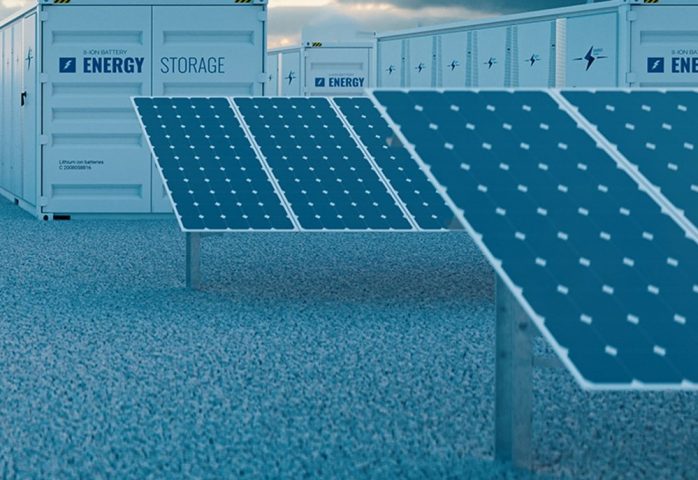Utilities, developers, and even regulators understand that there are potential benefits to co-locating solar and energy storage. In ERCOT, more than 25% of energy storage assets in the interconnection queue are co-located with solar.

The question for these co-located assets then becomes, what configuration – AC-coupled, DC-coupled, or Reverse DC-coupled – is appropriate for optimal cost and revenue for their asset?
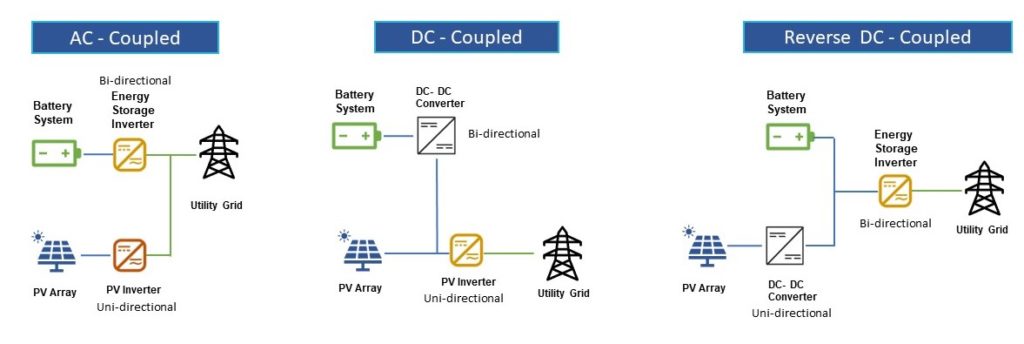
These varying configurations permit assets to participate and interact with the grid and energy markets, such as ERCOT, in different ways. In an AC-coupled configuration, the battery can charge only from the grid and can participate with ERCOT directly (almost as if it is a separate asset).
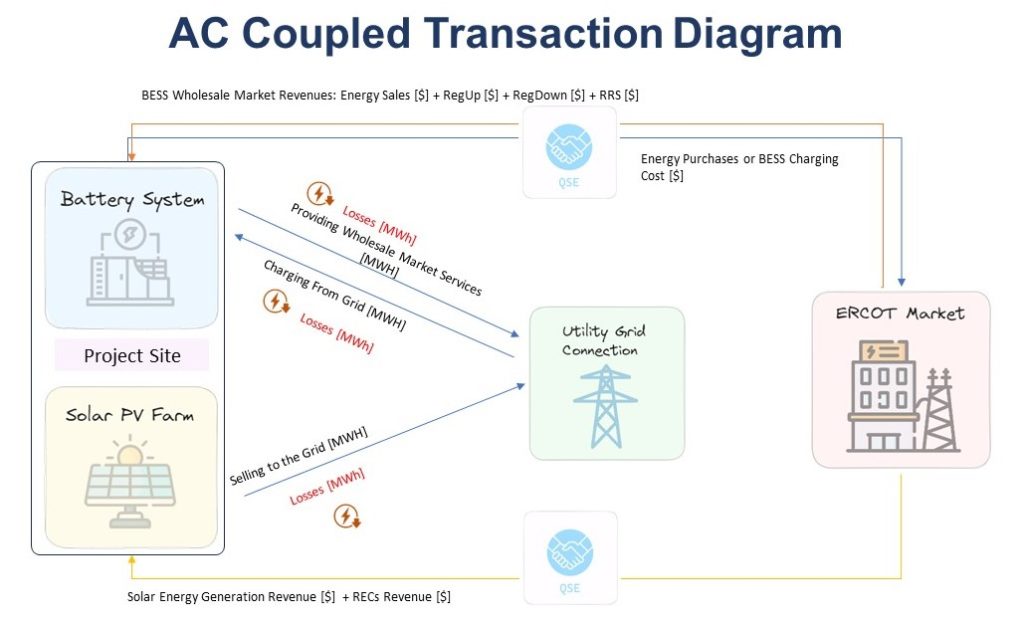
In a DC-coupled configuration, the battery can only charge from the solar system, and can offer service to ERCOT only by injecting energy through the solar inverters.
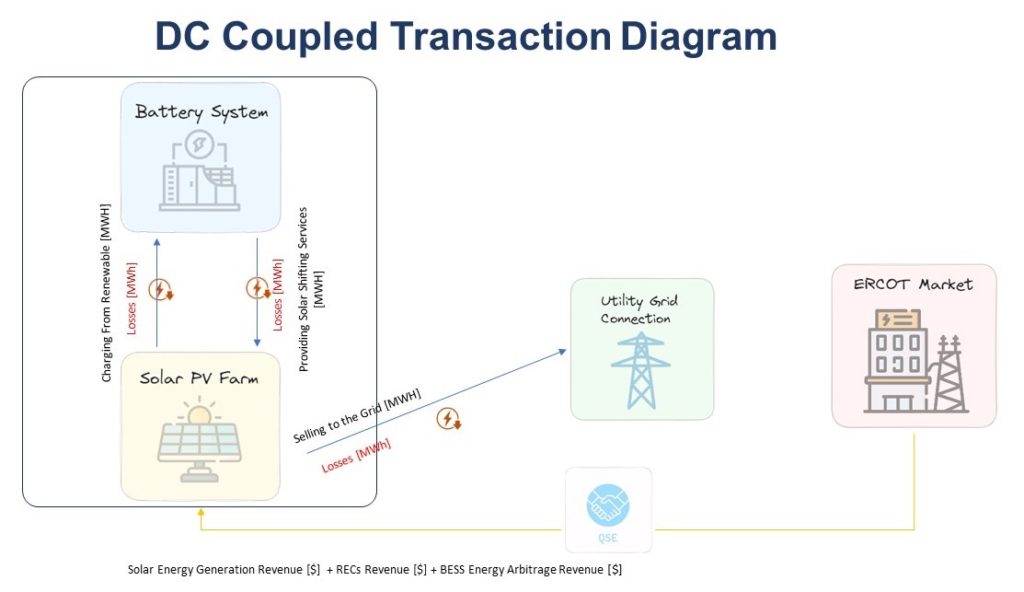
In a Reverse DC-coupled configuration, the solar energy is routed through the battery storage inverters meaning that the battery can charge from solar, and from the grid, and can offer Energy and Ancillary Services to ERCOT. In this configuration, the battery storage system can also charge from the co-located solar facility.
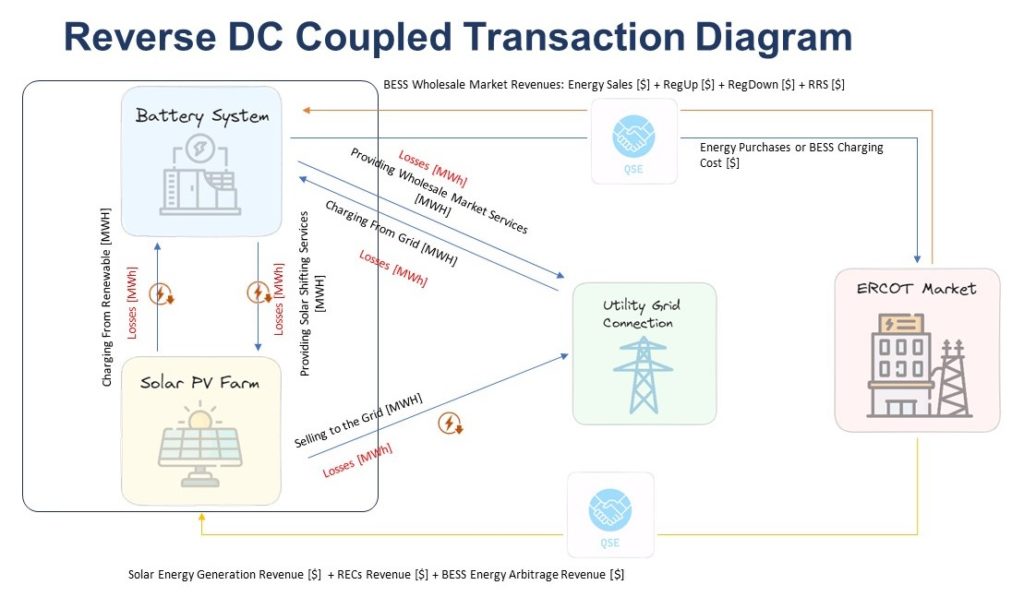
There are certain advantages and disadvantages to consider within these configurations related to their capabilities, costs, and control.
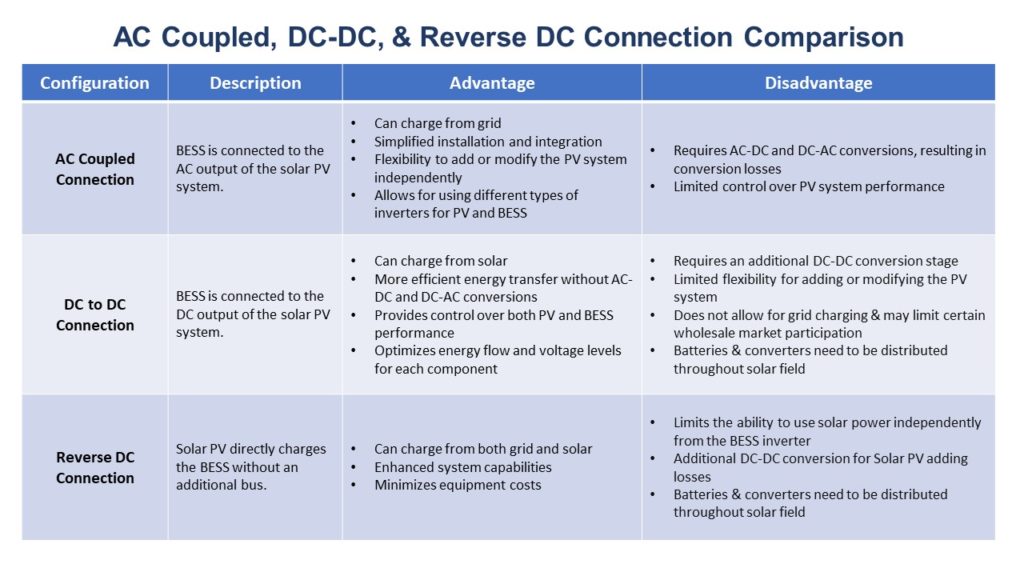
Acelerex has also conducted a detailed, quantitative analysis and comparison based on the final equipment cost and estimated wholesale market revenue to arrive at a forecasted project IRR for each configuration.

